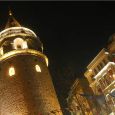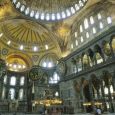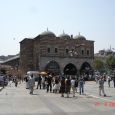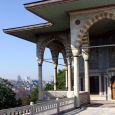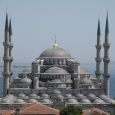Istanbul
Advertisement
By Air
Atatrk International Airport is a relatively new facility, having reopened in 2000 following a major modernisation. Its a large and busy airport that provides the main gateway into the country. Visitors from a large selection of European destinations will find flights connecting them with Istanbul, while transatlantic and Asian connections are also available.
By Ferry
Ferries run between Istanbul and Yalova and Bandirma on the south shore of the Sea of Marmara and vessels along these routes are capable of taking passengers and their vehicles. A passenger-only service is available between the Port of Pendik in Istanbul and the town of Yalova.
By Rail
Istanbul has two railway stations; Sirkeci Station and Haydarpasa Station, with the former serving European destinations such as Sofia, Budapest, Belgrade and Bucharest and the latter serving Turkish destinations. Trains are generally quite slow and few offer air-conditioning making long distance travel in the summer months somewhat uncomfortable. There are several daily services between Istanbul and the capital city of Ankara, with the fastest service being the express service taking 6 hours 30 minutes. Services also operate to Izmir, Gaziantep and Gaziantep.
By Bus
Intercity coaches operate between Istanbul and major Turkish destinations with the main bus station located in Esenler, about 10kms from the city centre. There are several companies operating services, with popular routes including those between Istanbul and Ankara, Antalya, Bursa, Izmir, Bodrum, Fethiye and Canakkale. Visitors wishing to make their way from EU destinations can use the Eurolines bus service to get into the country before transferring to Istanbul on a domestic coach service.
By Car
Driving in Turkey is hazardous at best and the country is known to have one of the highest accident rates in the world so visitors planning to drive to Istanbul are advised to do so with great care. If coming into Turkey from Europe, the E-80, E-90 and Trans European Motorway are the main roads into the city, with the E-80 providing principal access from the border at Edirne. The journey from Antalya can be made via the D-650 and the E-80 via Izmit, with an approximate travelling time of 12 hours.
Panorama from Galata Tower
From the north end of the square Yüksek Kaldirim in Istanbul, a steep street lined with shops and with 113 steps on each side, goes up to the Galata Tower (Galata Kulesi), off the street to the left. (The tower can also be reached by following Voyvoda Caddesi and bearing right). The Galata Tower (68m/223ft high), originally built in Byzantine times, was restored in 1423 by the Genoese and again in 1875; it now contains a restaurant and a night-club and affords the best general view of the city. The street continues up to Tunnel Square, with the upper station of the Tünel, an underground funicular, in the main part of Beyoglu (Lord's Son), and the old district formerly known as Pera. The upper part of Beyoglu, around Taksim Square, was
developed only in the 19th century in European style; in this area there are numerous hotels, foreign consulates, churches, schools and hospitals.
Haghia Sophia
Translating as Church of Divine Wisdom', Haghia Sophia is hailed as the finest example of Byzantine architecture in the world and dates back to the 6th century AD. Its impressive structure caught the eye of Mehmet the Conqueror who, following his capture of the city in 1453, converted it into a mosque. It remained a mosque until the founding of the Turkish Republic, when it was declared a museum. Among the articles of interest inside are the giant circular Ottoman shields with their religious inscribings and the magnificent Byzantine mosaics.
Misir Carsisi
Misir Carsisi is the citys traditional spice market which dates back to the 17th century when it was built as an extension to Yeni Camii. While the market originally sold a variety of exotic oils and spices, these days it has added to its collection with stalls vending Turkish delight, dried fruits and other local delicacies. The market is located in a busy commercial area where a variety of shops dealing in local crafts can be found.
Cannon Gate Palace
From the Soguk Çesme Gate in Istanbul we bear half right to the Topkapi Sarayi (Cannon Gate Palace) or Eski Saray (Old Palace), the old palace-city of the Sultans, built on the Seraglio Point hill, one of the seven hills of New Rome, on the site of the acropolis and the earliest settlement of Byzantion. This great complex of buildings set in gardens (now open to the public) bounded by battlemented walls and towers, consists of a number of buildings outside the main precincts (the Archeological Museum, the Mint, the church of Hagia Eirene, etc.) and, beyond these, the Inner Seraglio. Mehmet II built a summer palace here in 1468, and this was enlarged by Süleiman the Magnificent into the Sultan's principal residence, occupied by successive Sultan's until Abdul Mecid moved to the Dolmabahçe Palace in 1855.
The Topkapi Sarayi is surrounded by 5km of walls. The series of open courtyards are covered with 50,00 white roses in 1593. The second court enclosed flowerbeds and roses with plane trees and cypresses give shade. In the third court is a collection of fine trees such as magnolias, box, Atlas cedar and Lagerstroemia indica, during summer there are scented flowers. The fourth courtyard contains pavilions that are surrounded with flowers, trees and shrubs.
Sultanahmet Camii
Sultanahmet Camii, also known as the Blue Mosque, was built in the early 17th century during the reign of Sultan Ahmet and was an Islamic response to the construction of Haghia Sophia. The mosque is a focal point of Istanbuls Islamic activity and is the only construction of its kind in the city to feature six minarets. A stunning ornate interior features blue Iznik tiles and a spectacular dome which draws visitors eyes to Imperial Loge with its intricate latticework covering. During the summer, as the sun sets, a sound and light show is held in the mosque grounds.
May - September


